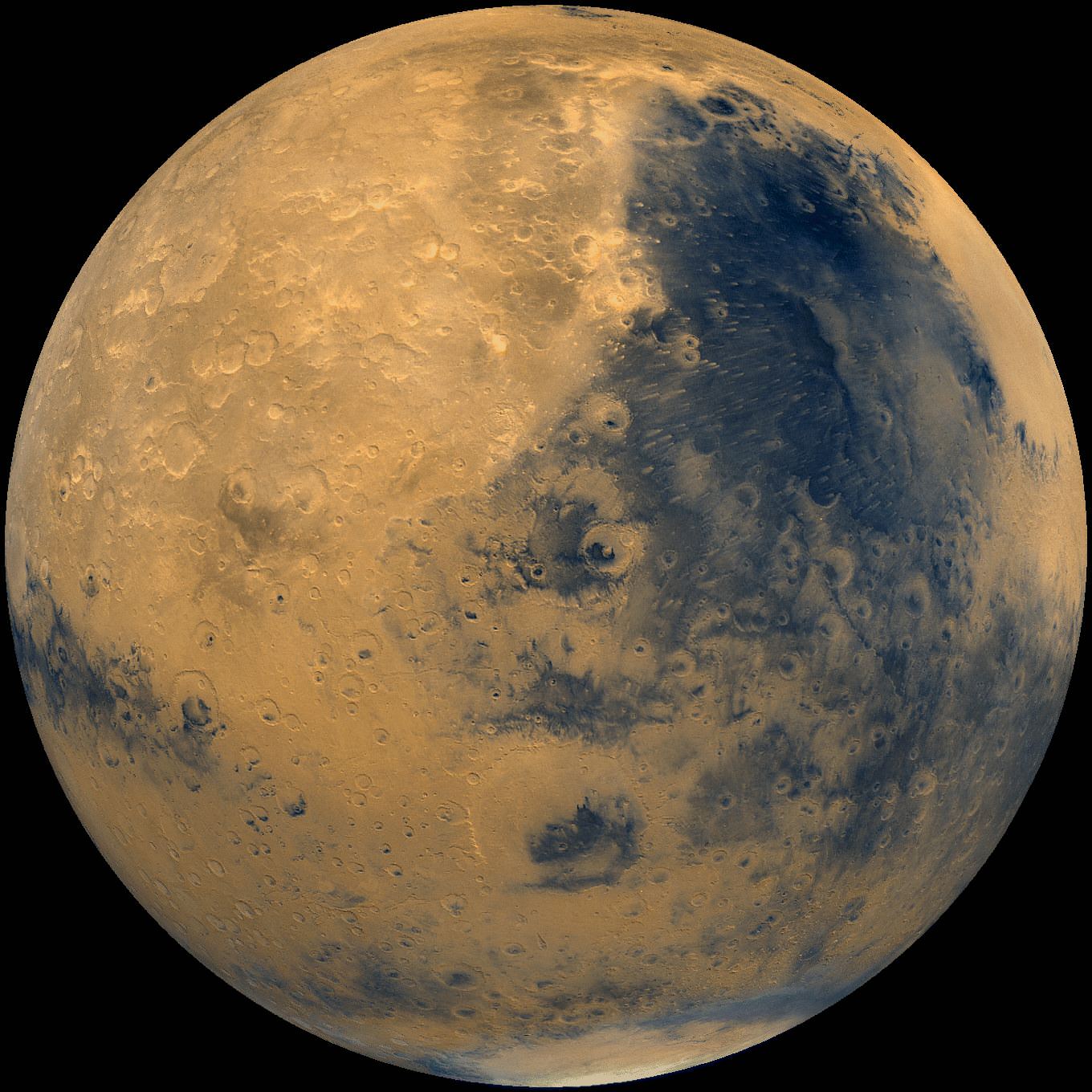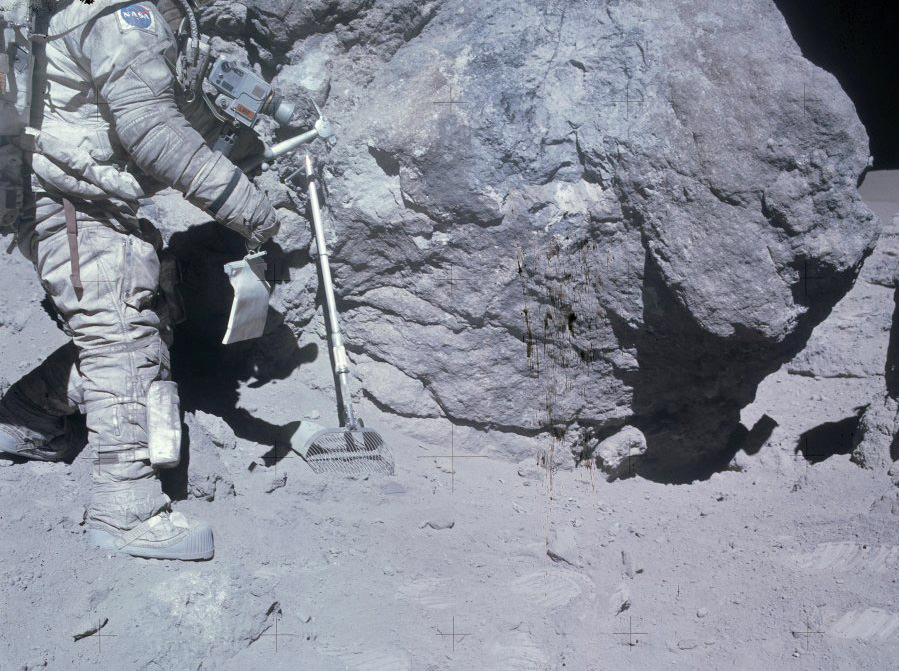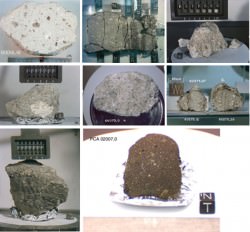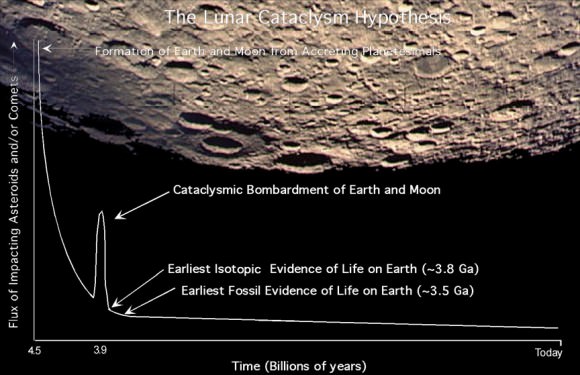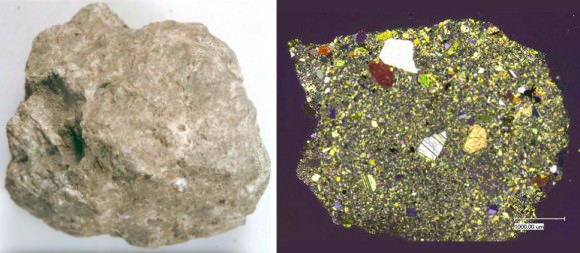Mars is often referred to as the Red Planet. But its signature color is only skin-deep – or, I should say, dust-deep. Beneath its rusty regolith Mars has many other hues and shades as well, from pale greys like those found inside holes drilled by Curiosity to large dark regions that are the result of ancient lava flows. Now, researchers think we may have an actual piece of one of Mars’ dark plains here on Earth in the form of a meteorite that was found in the Moroccan desert in 2011.
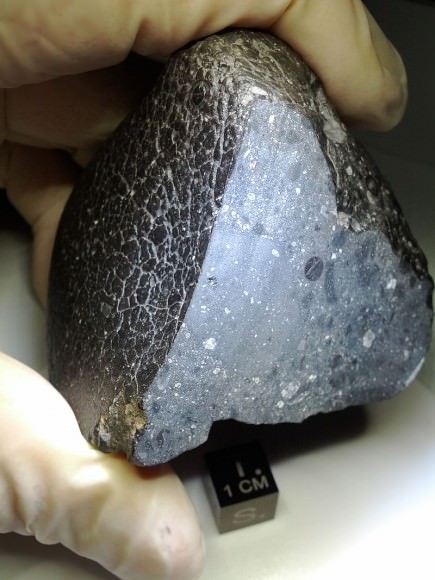
Classified as NWA 7034 (for Northwest Africa) the meteorite is a 320-gram (11 oz.) piece of Martian basaltic breccia made up of small fragments cemented together in a dark matrix. Nicknamed “Black Beauty,” NWA 7034 is one of the oldest meteorites ever discovered and is like nothing else ever found on Earth.
According to a new study on a fragment of the meteorite by researchers from Brown University in Providence, Rhode Island and the University of New Mexico, Black Beauty is a 4.4-billion-year-old chunk of Mars’ dark crust – the only known piece of such to have landed on Earth.
While other meteorites originating from Mars have been identified, they are of entirely different types than Black Beauty.
The researchers used a hyperspectral imaging technique to obtain data from across the whole fragment. In doing this, the measurements matched what’s been detected from Mars orbit by NASA’s Mars Reconnaissance Orbiter.
“Other techniques give us measurements of a dime-sized spot,” said Kevin Cannon, a Brown University graduate student and lead author of a new paper published in the journal Icarus. “What we wanted to do was get an average for the entire sample. That overall measurement was what ended up matching the orbital data.”
In addition to indicating a truly ancient piece of another planet, these findings hint at what the surface of many parts of Mars might be like just below the rusty soil… a surface that’s been shattered and reassembled many times by meteorite impacts.
“This is showing that if you went to Mars and picked up a chunk of crust, you’d expect it to be heavily beat up, battered, broken apart and put back together,” Cannon said.
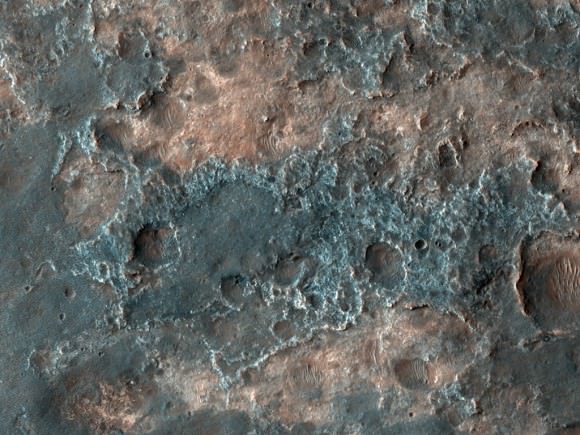
Source/read more at Brown University news.

